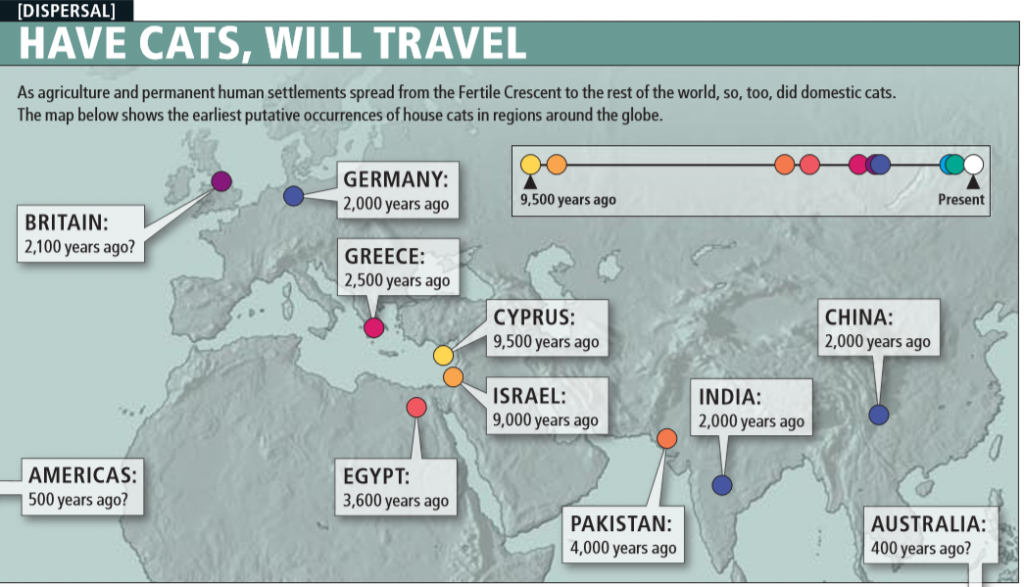What is International Cat Day?
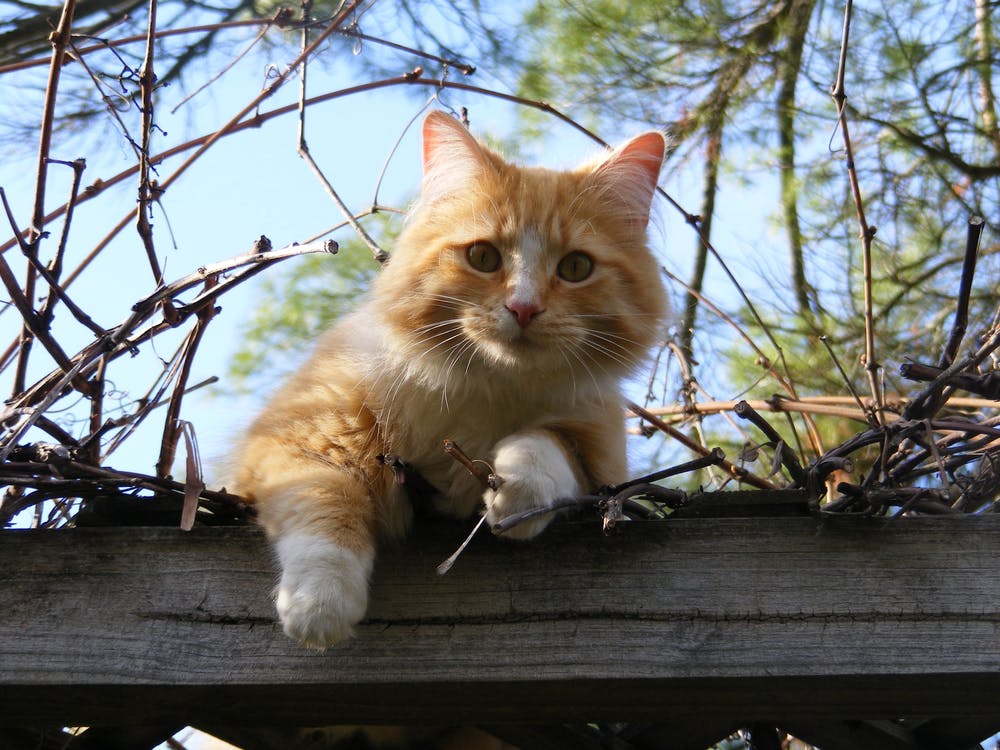
#InternationalCatDay a full 24 hours of recognition and veneration of one of humanity’s oldest and most beloved pets.
International Cat Care is the custodian of International Cat Day, an organisation that works internationally to improve cat welfare through collation and promotion of evidence-based research into feline physical and mental wellbeing.
Read more about cats, how to care for cats, and how you and your cat can celebrate #InternationalCatDay:
The history of cats
From ancient times, cats have been recognised and venerated as one of our most beloved companion animals.
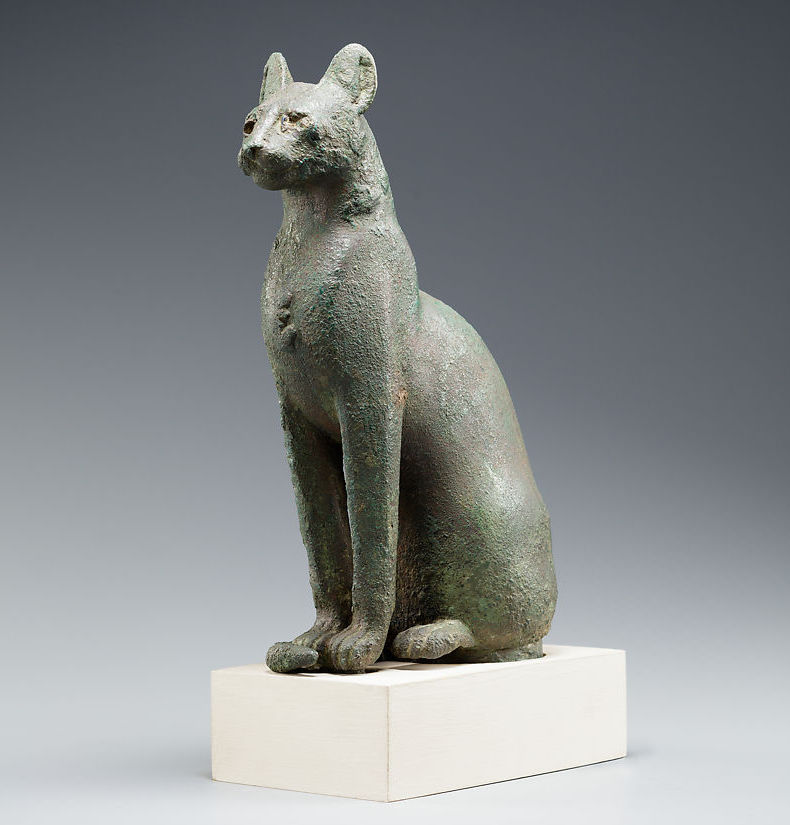
664–30 B.C. Late Period–Ptolemaic Period
The goddess Bastet (meaning ‘She of the City of Bast’) is known to have existed as far back as the Second Dynasty (2800 BCE), although she was first depicted with a lion head. Bastet rose to become the chief deity of the city of Bubastis in the south-eastern part of the Nile Delta, and soon became popular throughout Egypt. At some point domestic cats became regarded as earthly manifestations of the goddess Bastet. This likely occurred during the Twenty-second Dynasty (945–715 BCE), when the city of Bubastis (home of Bastet) rose to prominence during a lengthy period of political instability in Lower Egypt.
The traditional view that cats were domesticated in Egypt was first challenged by the discovery of a cat buried with human remains around 9500 years ago in Cyprus. The Cypriote burial suggests that the process of domestication may have begun when humans of the Fertile Crescent became sedentary and their cereal storage attracted rodents, and in turn cats. Cats species are not native to the island of Cyprus, implying that humans brought them by boat, probably from the nearby Levantine coast.
The ancestors of domestic cats were likely attracted to early human settlements by rodents pillaging grain stores. The cats were subsequently welcomed and encouraged by the Neolithic farmers because they kept rodent populations in check. Rubbish heaps that inevitably grew on the outskirts of human towns would have provided year-round pickings to resourceful felines.
Thus, both the rubbish and the rodents would have encouraged wildcats to adapt to living close to humans and other animals, including other cats.
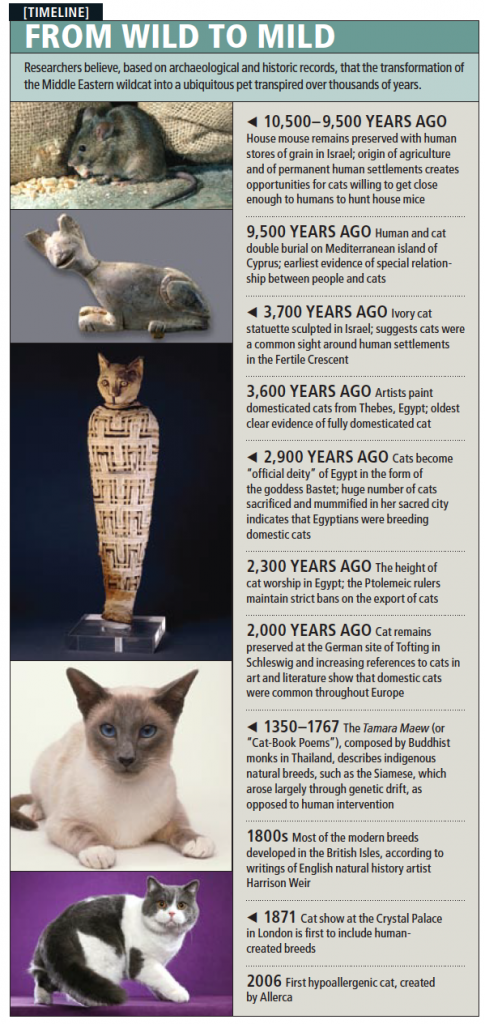
The domestic cat has since integrated itself within human societies, and through commerce, colonisation, and migration has been introduced to all continents except Antarctica.
Cats today
Worldwide there are an estimated 600 million cats, with over two-thirds being stray or feral.
In the UK, 24% of the adult population live with at least one cat, with an estimated population of 10.7 million pet cats.
Roaming and indoor-only cats
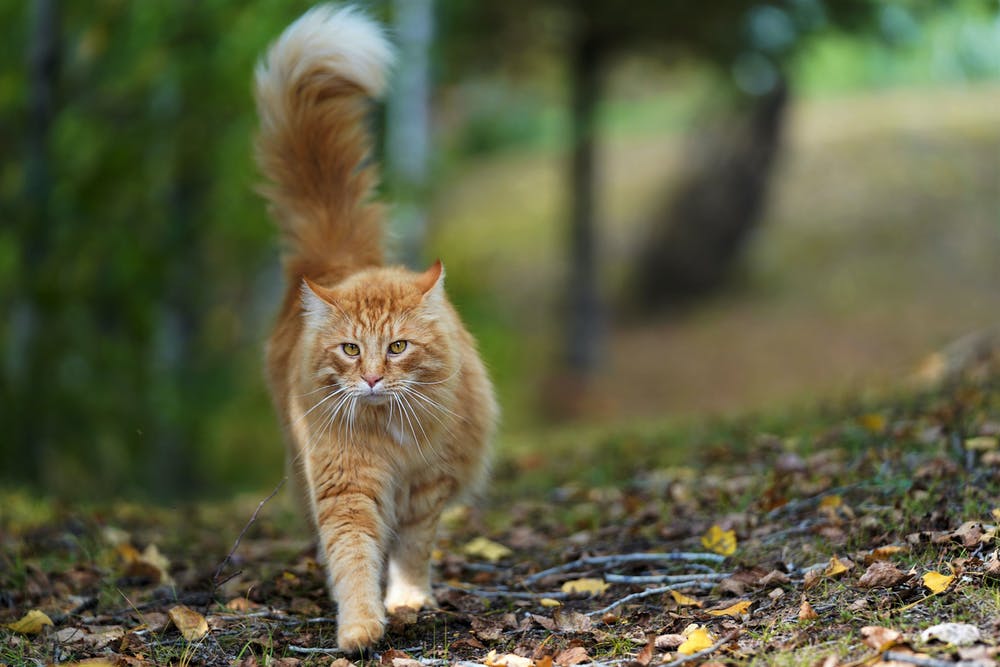
Cats with outdoor access benefit from more opportunities to exhibit natural behaviours such as climbing, exploring, communicating with other cats in the area, and hunting. However, dangers include busy roads, the risk of getting trapped somewhere, and neighbourhood cats may distress a timid feline. Especially for cats with a disability or medical problem, living indoors may be the better option and where they feel most comfortable. Keeping your cat inside will help keep them safe, but some indoor environments can become predictable and boring, leading to stress, inactivity and obesity. While some adjust well to being a housecat, it can be hard for cats to cope with living indoors if they have lots of energy, love to explore and have previously been allowed time outdoors.
Here are some resources to help you decide what is best for you and your cat and ensure that your cat is happy and healthy:
- Indoor-only or outdoor access? (International Cat Care Blog)
- Essential Guide on Indoor and Outdoor Cats (Cats Protection)
- Advice on how to meet the needs of indoor cats (RSPCA)
Reducing predation
Cats are known to many as the notoriously independent pet that roams neighbourhoods worldwide. In previous centuries cats were encouraged to hunt for sustenance and to reduce rodent populations that were pillaging of human food supplies. While some cats are still valued in that role, the predation habits of free-roaming cats are increasingly being viewed as a problem for those who prioritise their cats’ wellbeing but have concerns about wildlife predation. This is especially so when song-birds or endangered species are preyed upon.
In their study on cat guardians in the UK, Crowley et al., (2020) identified five distinctive perspectives:
- Concerned Protectors, who focus on cat safety.
- Freedom Defenders, who prioritise cat independence and oppose any restrictions on behaviour.
- Tolerant Guardians, who believe outdoor access is important for cats but dislike their hunting.
- Conscientious Caretakers, who feel some responsibility for managing their cats’ hunting.
- Laissez- faire Landlords, who are largely unaware of the issues surrounding roaming and hunting behaviour.
What kind of cat owner are you?
The relatively recent phenomenon of indoor-only cats is welcomed by those concerned about wildlife predation or who consider the modern world too dangerous for cats. However, many owners feel their cats are happier and healthier if they are free to roam at least part of the day.
Here are three things you can do to reduce your cat’s predation on wildlife:
- Invest in Birdbesafe® collar. A recent study by Cecchetti and colleagues (2021) found these collars reduced the number of birds captured and brought home by 42%.
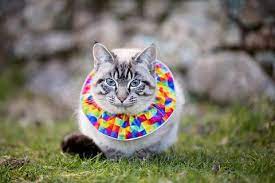
- Five minutes per day of interactive play, using a fishing or mouse toy, has also been demonstrated to reduce predation of live prey.
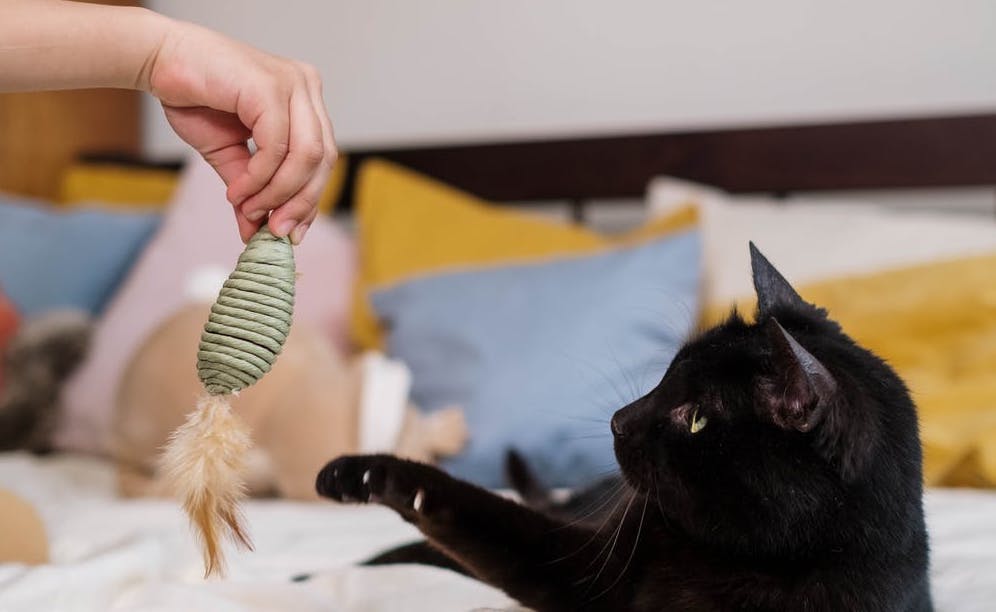
- Feed a high protein diet. Research has shown that feeding cats a protein-rich meat diet reduces their tendency to hunt.
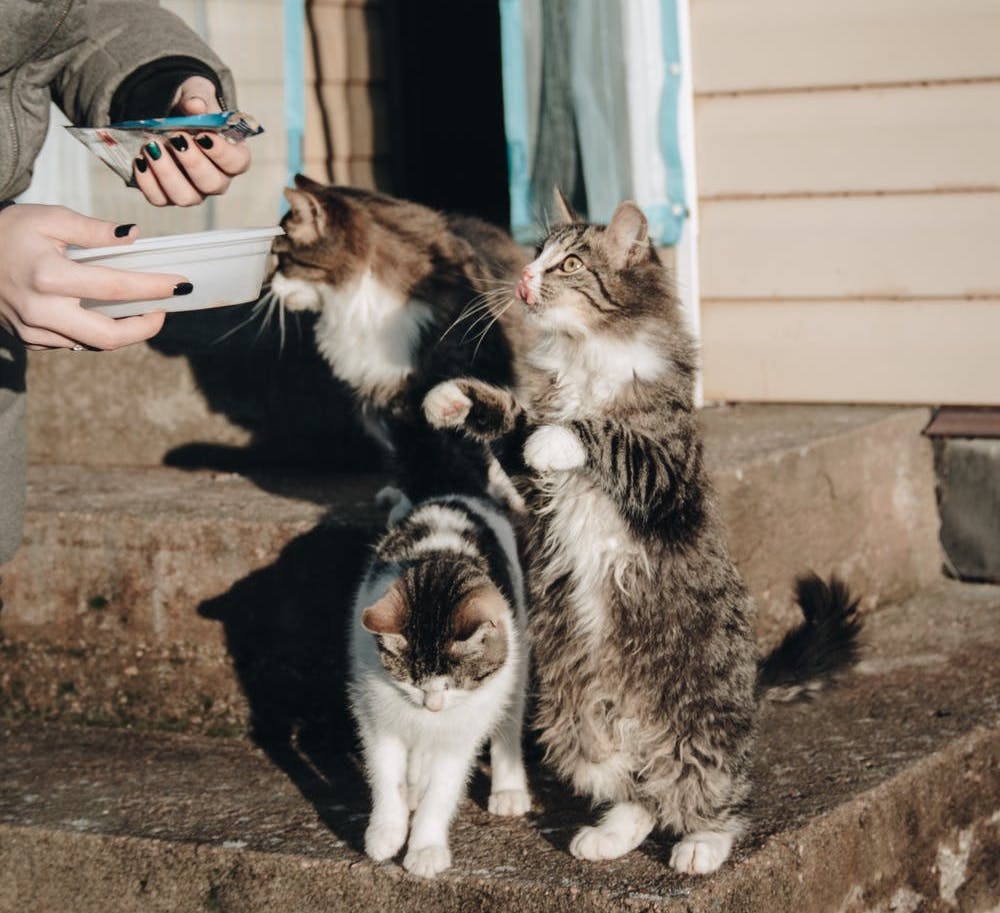
Cat Nutrition
Diet is important for both indoor cats, who are more prone to obesity, and for roaming cats who benefit from an established routine and regular mealtimes.
Cats must eat meat. Cats are obligate carnivores, which means cats cannot be vegetarian. Unlike humans and many other animals, cats cannot make their own taurine, which is an essential amino acid that is only found in meat.
- Download the Cats Protection Essential Guide of Feeding and Obesity
Cat-owner relationships
Feeding a complete and balanced diet and engaging in interactive playtime also helps you bond with your cat and keep them happy and healthy!
However, despite their popularity, laser pointers may not be the best toys for cats. Recent research by Kogan and Giggs (2021) indicates laser pointer games may cause frustration and lead to abnormal obsessive behaviours due to the catch impulse never being satisfied.
What kind of relationship do you have with your cat you?
Ines et al., (2021) developed a questionnaire to assess emotional elements underpinning the relationship between cats and their humans. With data from almost 4000 responses, these researchers were able to identified five distinct forms of cat–owner relationship:
- The (1) ‘open relationship bond’ that was characterized by a lightly emotionally invested owner and an avoidant cat.
- The (2) ‘remote association’ and (3) ‘casual relationship’ are characterized by an emotionally remote owner but differ in the cat’s acceptance of others.
- The (4) ‘co-dependent’ and (5) ‘friendship relationship’ are characterized by an emotionally invested owner but differ in the cat’s acceptance of others and need to maintain owner proximity.
Pedigree breeds & cat fancy
The majority of traits exhibited by the contemporary cat breeds originated within the past century, largely due to selection for aesthetic rather than functional traits. The ancestral species, Felis sylvestris libyca, is a black mackerel tabby, but post-domestication, the domestic cat accumulated a number of genetic mutations affecting colour, pattern and coat length.
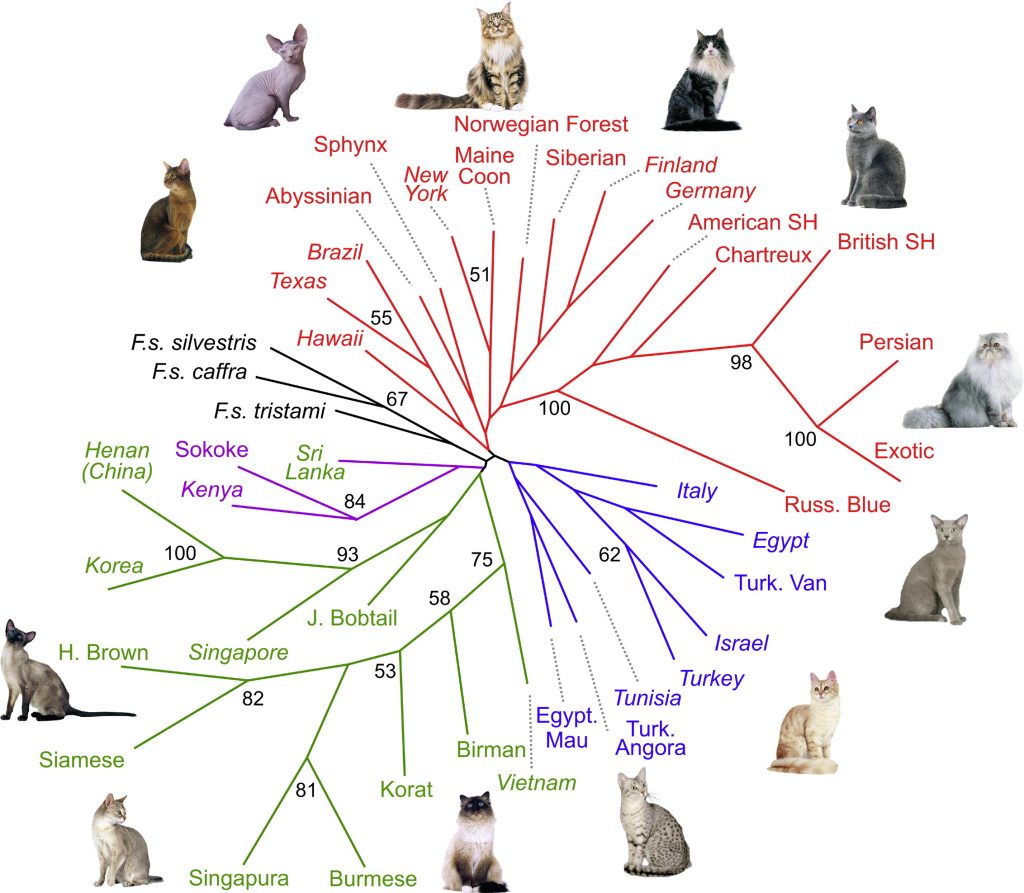
The UK’s Governing Council of Cat Fancy (GCCF) recognises only 42 breeds, most of which arose in the past 75 years.
Do you have a favourite breed, or are you a moggy lover?
If you are considering a specific cat breed or interested in participating in cat shows, please ensure you support breeding programmes that prioritise feline health. Breeding for exaggerated traits and extensive inbreeding can create health and welfare issues. The UK’s Governing Council of Cat Fancy (GCCF) has set out guidelines for breeders to ensure that the health of cats takes precedence.
Social cats, socialisation, and welfare
Unlike the wolves from which our pet dogs were domesticated, the progenitor species of domestic cats does not have complex social organisations and these felines live predominantly solitary lives. The signalling repertoire of the ancestral population must presumably have changed as cats evolved to live amongst humans. Cats are facultatively sociable, meaning a kitten can adapt to living a relatively solitary life, to living in cat colonies, or to living with humans and other animals.
As kittens, cats show remarkable adaptability to living amongst humans, other cats, dogs, etc., and readily adapt to a wide range of living arrangements. However, research suggests the window for socialisation closes around three months of age, and adult cats rarely adjust to a life with humans if never socialised as kittens (reviewed here). Likewise, kittens adopted into a human household, and subsequently kept in a one-cat household they will miss the window of socialisation to other cats and such individuals may never learn how to interact appropriately with their own species.
The importance of early socialisation for kittens. The experiences a cat has as a kitten greatly impact how they adjust to changes as an adult. Positive experiences will help your kitten become a friendly, well-adjusted adult cat. PDSA offers some tips on socialising kittens.
Cats are individuals! While socialisation is important, other factors also influence a cats’ friendliness towards humans. These include genetics, the mothers’ temperament, experiences, traumas, etc.,
Training cats
As the custodians for #InternationalCatDay, International Cat Care are focusing this year’s theme on training for cats and for their humans to #BeCatCurious
International Cat Care reported that 95% of cat owners want more advice on training their cat. At least half said they struggled to get their cat into the cat carrier. By going to their webpage, humans can sign up to receive emails with tips and advice on how to positively train your cat to go into the cat carrier at home and for trips to places like the veterinary practice.
Cats are not dogs, but this does not mean they are not trainable. It simply means they responds to different methods of training. Dr. Sarah Ellis, author of The Trainable Cat: A Practical Guide to Making Life Happier for You and Your Cat, says training should be about teaching the cat the key skills that they need to live in society with us. Because without those skills cats often struggle.
Adventure cats & harness training
With the outdoors being increasingly viewed as unsafe for cats, many owners are looking at other ways to help their cats experience the outdoors more safely. This includes constructing enclosed patios or garden areas and taking your cat for a walk on a leash.
‘Adventure cats’ is a growing trend for taking your cat on holidays or day trips. Many cats seem to love going out and about on a leash. However, ‘adventuring’ and leash-walking it is not for every cat. AdventureCats.Org has written a guide to help you decide if this activity is right for your cat.
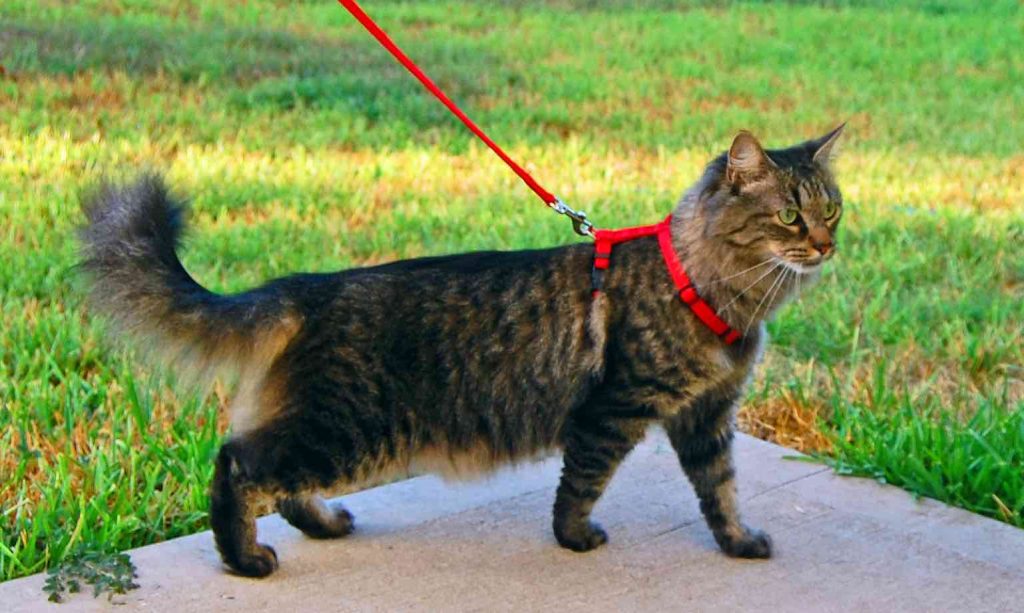
How can you and your cat join in International Cat Day?
- Add a Facebook frame by searching ‘International Cat Day 2021 by iCatCare’ or a Twibbon by visiting: twibbon.com/Support/international-cat-day-2021
- In the run up to International Cat Day, @iCatCare are asking cat companions to post photos and stories on social media and share ‘Cat Training in Progress’ photos and stories using the hashtag #BeCatCurious for #InternationalCatDay🐱❤️
Resources, references, and further reading
For more information on cats, check out the following organisations dedicated to feline welfare:
- Cats Protection
- International cat care
- Governing Council of Cat Fancy (GCCF)
- AdventureCats.Org
- PDSA (cats & kittens)
- RSPCA (cats & kittens)
References and further reading:
- Bradshaw & Ellis, 2016. The Trainable Cat: A Practical Guide to Making Life Happier for You and Your Cat. Penguin Books.
- Cecchetti et al., 2021. Provision of high meat content food and object play reduce predation of wild animals by domestic cats Felis catus. Current Biology, 31(5): 1107-1111.
- Crowley et al., 2020. Diverse perspectives of cat owners indicate barriers to and opportunities for managing cat predation of wildlife. Frontiers in Ecology and the Environment, 18(10): 544– 549.
- Driscoll et al., 2009. The taming of the cat. Scientific American, 300(6): 68-75.
- Ines et al., 2021. My cat and me—A study of cat owner perceptions of their bond and relationship. Animals, 11(6): 1601.
- Kogan & Giggs, 2021. Laser light pointers for use in companion cat play: Association with guardian-reported abnormal repetitive behaviors. Animals, 11(8): 2178.
- Lipinksi et al., 2008. The ascent of cat breeds: genetic evaluations of breeds and worldwide random-bred populations. Genomics, 91(1):12-21.
- Turner, 2021. The mechanics of social interactions between cats and their owners. Frontiers in Veterinary Science, Online.
- Malek 1997. The Cat in Ancient Egypt. Penn Press.
- Vigne et al., 2004. Early taming of the cat in Cyprus. Science, 304(5668): 259.

